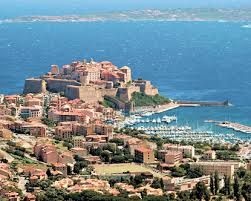
Corsica Island,France
More than three million individuals visit Corsica every year, drawn by the mellow atmosphere and probably the most assorted scenes in all Europe. No place in the Mediterranean has shorelines better than the island's ideal half-moon coves of white sand and transparent water, or seascapes more emotional than the red porphyry Calanches of the west drift. Despite the fact that the yearly guest inundation now surpasses the island's populace almost ten times over, tourism hasn't spoilt the spot: there are a couple of resorts, yet overdevelopment is uncommon and skyscraper pieces are bound to the fundamental towns.
Bastia, capital of the north, was the central Genoese fortress, and its fifteenth-century citadelle has survived just about in place. It is a simply Corsican city, and trade as opposed to tourism is its fundamental concern. Likewise generally undisturbed, the northern Cap Corse harbors welcoming sandy bays and angling towns, for example, Macinaggio and Centuri-Port. Inside a short separation of Bastia, the rich district of the Nebbio contains a dissipating of houses of worship constructed by Pisan stoneworkers, the prime illustration being the Cathédral de Santa Maria Assunta at the imperatively chic minimal port of St-Florent. Sandy shorelines and rough headlands intersperse the west drift the distance down to Ajaccio, Napoleon's origination and the island's capital, where asphalt bistros and palm-lined roads overflow with sightseers in summer. Somewhat less make it to close-by Filitosa, most noteworthy of the numerous ancient destinations scattered over the south. Propriano, the territory's central resort, lies near stern Sartène, previous seat of the wild primitive rulers who once governed this area and still the quintessential Corsican town. More megalithic locales lie south of Sartène on the best approach to Bonifacio, a brush of aged structures roosted on wrinkled white precipices at the southern tip of the island. Just as prominent, Porto-Vecchio gives a springboard to journeys to the astonishing shorelines of the south. The eastern plain has less to gloat of, however the Roman site at Aléria is worth a visit for its magnificent museum.



